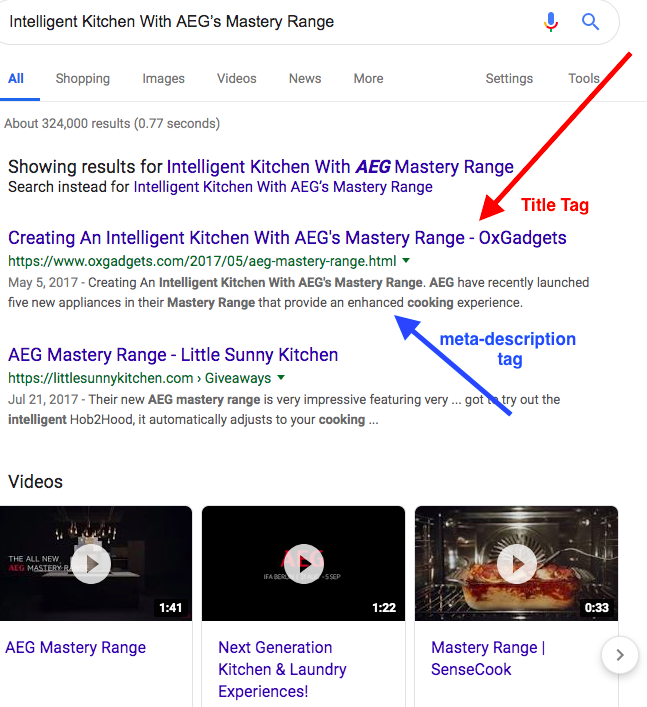If you want to see your company website on page one of the SERPs, your marketing team is likely hard at work with content creation, design, and promotion. Before content can drive website visitors, it’s important that your website’s technical features follow these Google Webmaster Guidelines and recommendations. Before you invest valuable marketing dollars in design and content creation, follow these guidelines so that your inbound marketing and SEO campaign is built on a solid foundation.

The infographic below provides a high-level view of website structure:


Yoast does a great job of explaining how title tags and meta descriptions can improve click-through rates.
While there are many in-depth articles on technical SEO, this list is a manageable starting point for any marketing or web team who lack an SEO or inbound expert.
Guest Post from Markelle Harden.
Webmaster Guidelines 101
Google’s General Guidelines give straight-forward, common sense advice, but website designers who don’t specialize in inbound marketing or SEO don’t implement them.Organize Your Site Structure & Submit a Sitemap
Organizing your website is no small task. An experienced web designer and content team will help you research UX (user experience), pillar topics and keywords, and provide a website structure for superior user experience. Once the main pages are listed in the top navigation, supporting content is organized into URLs according to the longtail keywords and related topics. Once all of the URLs are published, generate a sitemap, and submit it to the search engines. A sitemap of your website is an XML file that contains all of the URLs inside your website; it's a complete index for search engine bots to read. Use a tool like LucidChart to create your sitemap from a visual angle, then download the XML file to submit to Google.The infographic below provides a high-level view of website structure:
Title Tags, Meta Descriptions, and H1s
In addition to using tags that will draw search engine bots to your content, make sure they encourage searchers to click on your website when it appears in the results. Create title tags and meta descriptions with your target audience and keywords in mind. These words are not only visible to search engines looking for matches to search queries, but they are also visible to internet searchers and will motivate them to click on your website.Yoast does a great job of explaining how title tags and meta descriptions can improve click-through rates.
Consolidate Duplicate URLs
Similar or duplicate pages require a canonical version so that Google knows which page to crawl and index. A canonical URL is different than a 301 redirect in that a rel-canonical tag tells Google which URL is the original version of a similar page, while a 301 redirect tells Google that an old URL has moved to a new or updated one. Moz does a great job explaining everything about consolidating URLs in this Whiteboard Friday post.Design for Website Speed
In early 2018, Google announced that page speed is a ranking factor in mobile search ranking. Later in the year, The Speed Update became official. Not only is website speed an essential part of Google’s Guidelines, but it’s also a reflection of your brand to new website visitors. If you’d like to improve your website user experience AND meet Google guidelines for web design, Knowmad Digital Marketing offers a handy UX checklist that includes page speed tips.Check for Blocked Robots.txt
Blocked robots.txt files take URLs out of Google’s index. The code is commonly used when websites are in the development stages and remain on key category pages after the site goes live, making it impossible for page one placements. ScreamingFrog and DeepCrawl offer the best tools for checking your site for these types of crawl errors and more.Use Short URLs
Short URLs refers to URL structure; not URL shorteners used for social media posts like bit.ly or ow.ly. According to Google Guidelines, keep your URL structure as simple as possible. Use hyphens to separate long phrases and avoid irrelevant parameters (such as numbers). Visit Search Console Help for a complete URL structure guide.Verify Website on Google Search Console
Google Search Console, formerly known as Google Webmaster Tools, is a FREE service provided by Google to help you detect errors that can impact your website visibility. In addition to error reporting, the latest version of Google Search Console can help you identify all of the following issues that impact and provide search engine information:- Information about searches for my website content according to query, country, and device
- Index coverage report
- Identify site performance across devices
- Monitor click-through rates
Don’t Forget Google My Business
Although Google My Business is not part of Google’s Webmaster Guidelines, it’s a valuable tool for driving local mobile traffic to your website. Use this infographic to optimize your Google My Business listing.While there are many in-depth articles on technical SEO, this list is a manageable starting point for any marketing or web team who lack an SEO or inbound expert.
Guest Post from Markelle Harden.

